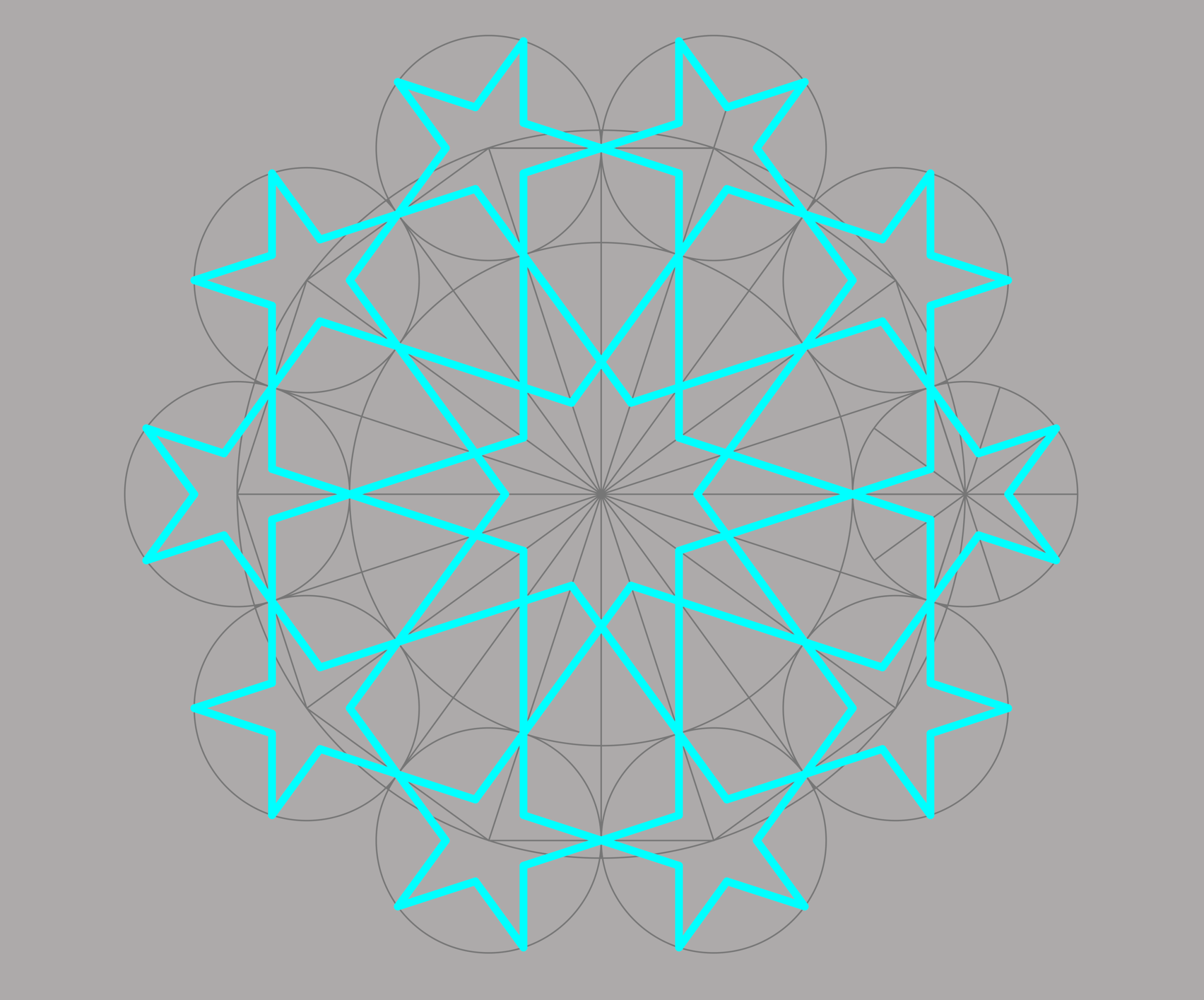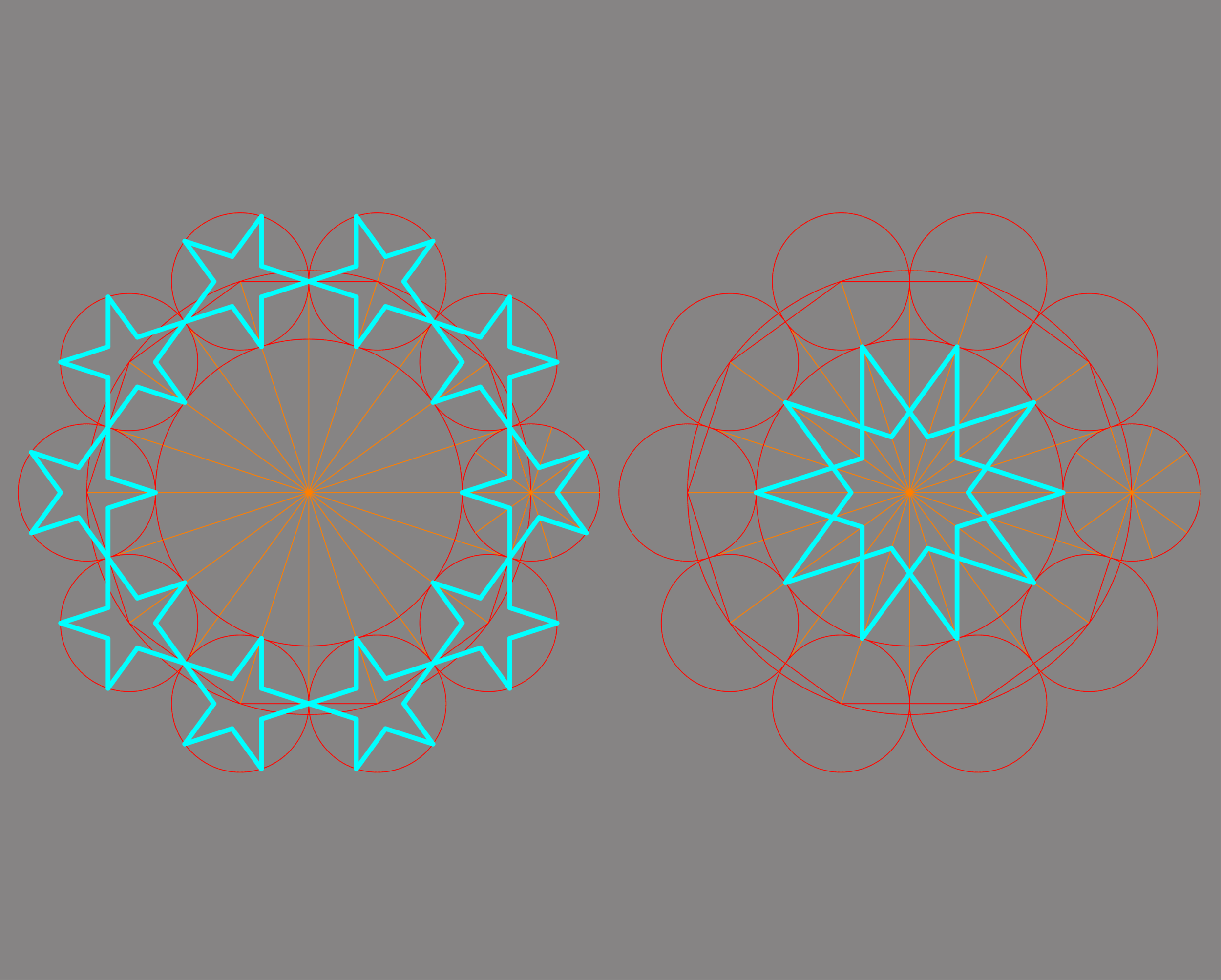The Classic Rosette
If one design class is to represent Islamic geometric design, a rosette would be a good choice.
Rosettes. A classic design
Thousands of constructions of many of these classics have been posted over the years. What can I possibly have to say that would be of interest?
Just this. There are an infinite number of possible rosette patterns. There are doubtless many, many thousands of known examples. You cannot learn them all as unique problems to be studied, cataloged and remembered. If you want to master them you need to understand the underlying logic and structure.
The structure of this family has been understood in the west for a well over a century, at least. James William Wild briefly describes the key structure element of the 12 rosette pattern in his notebooks from Cairo in the 1840s.(1) Jules Bourgoin used the underlying logic in some of his constructions. Ernst Herzfeld’s sketches in his notebooks show a clear understanding of the structure. It has not been clearly described in an accessible publication until the 20th century.
Anthony J. Lee described the structure in the best short introduction to the rosette’s structure in 1987 in the journal Muqarnas. The publication is readily accessible but apparently not well known. Lee’s notebooks reporting his research on the Islamic geometric pattern art is the largest influence on my understanding.
The Mamluk era rosette shown above is very easy to understand. There are only two or three concepts to explain. Five lectures from 2019 are loaded here where I attempt to lay out a logic to understand these patterns. It should make them easy to approach in recreating historical patterns and using them in new patterns. I will present only a brief outline in this post and delve into the details in the lectures. As I expand the examples to new pattern posts I will show where that logic is used and where the possibilities are expanded. The following is the briefest of introductions to introduce you to what is peculiar to my approach in the lectures.
These are surprisingly simple in Definition
Simple or complex, as above, 6, 8, 10 or 16 points in the rosette, this family is surprisingly simple to define. If we look beneath the surface complexity, there are only two or three decisions to make. After the decisions are made, the mechanics of drawing these are also not too bad. Extending these to cover a larger surface pattern- tiling them- gets a bit complex but even that is manageable.
The structure of the rosette is easiest to see if the pattern is expanded. This ring of stars is formed when the rosettes interact with each other in tilings. In the 10 fold rosette, they are perfect pentagrams. In all other symmetries they are more or less distorted. When we draw them in here, it is easier to see the underlying logic. There is nothing new here yet. People discuss this everywhere.
When we take this figure apart, it consists of two types of simple star polygons. These are very simple to define and draw. The point where my discussions will depart from most people is in making this structure the key to thinking about the layouts. The lectures will concentrate on the few rules of combining simple star polygons in tilings as the way to create the rosette.
It’s time to go to the lectures, look at taking them apart to see the structure, and build them up on paper. The first lecture of the series; Foundations.
Notes to the text:
1) James William Wild’s Notebooks. Victoria and Albert Museum, London. Acc Nr. 2011EP3581
See a short discussion of what was known in the 19th century, and a copy of Wild’s notebook entry, Here.
2) Lee, Anthony J, Islamic Star Patterns, Muqarnas, Vol. 4 (1987), pp. 182-197.



